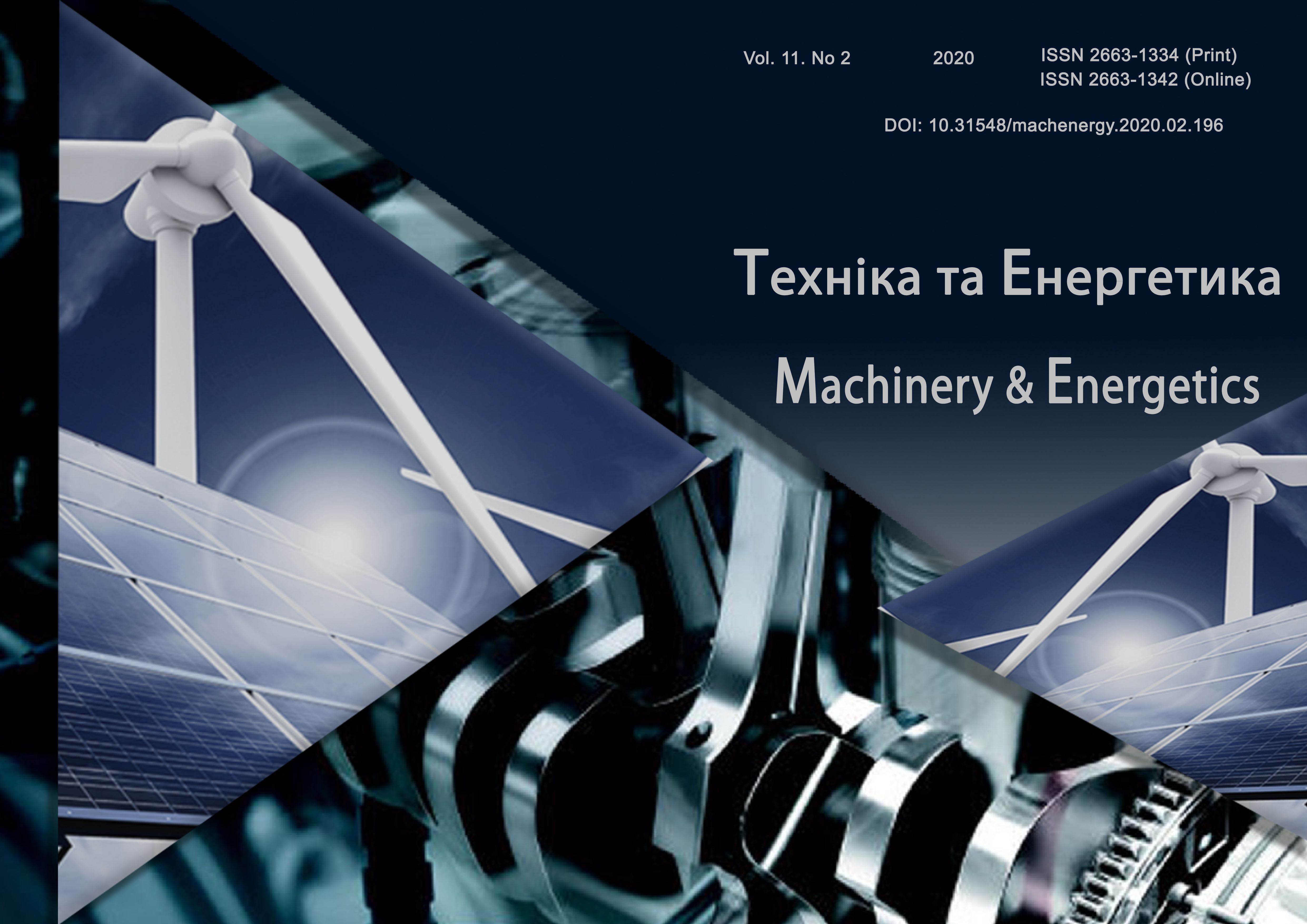Calculation of gravitation descent formed by surface of skew closed helicoid
DOI:
https://doi.org/10.31548/machenergy2020.02.049Keywords:
gravity descent, force of gravity, equi-librium of forces, skew helicoid, steady-state regime.Abstract
The article deals with theoretical issues of designing gravitational descents. Movement of goods or material on them is carried out under the influence of self-weight. Such transport is widely used in coal mines, mines, concentrating factories. Transport of the material can be carried out on special surfaces: decks, cascade and screw descents, pipes, gutters, etc. The nature of the parti-cle motion depends on the design features of such de-scents.
It is easier to calculate the descent in the form of an inclined plane. The particle moves along it in a straight line, which is the line of greatest slope. If the working surface of the descent is a curvilinear surface, then the trajectory will be a curve. In this case, there is an addi-tional force of inertia - centrifugal, the value of which depends on the curvature of the trajectory. This force can divert the trajectory of the line of greatest inclination and also increase the particle pressure on the surface, which leads to an increase in the friction force. When drawing up the differential equations of motion, all the forces applied must be taken into account
The design of a screw descent in which the working surface is a nondevelopable (skew) helicoid is considered in the work. In order not to set up differential equations of motion of a particle, we propose to describe its motion after stabilization, that is, after it begins to move along a screw line with a constant speed. In this case, the differen-tial equation of motion of a particle is replaced by the equations of equilibrium of the forces applied to it in the projections on the coordinate axis. The equations of equi-librium of forces is set up in the projections of both the fixed coordinate system and unitary vectors of the moving Darboux triad. In both cases, the same analytical depend-encies were obtained. They allow you to design the de-scent at a predetermined calculated velocity of motion of the particle with a known coefficient of friction. The same calculated velocity of motion of a particle at a given coefficient of friction can be provided by a surface of the skew helicoid with different structural parameters.
References
Pylypaka S.F., Kresan T.A., Bryndak E.V., Kost-yuchenko A.A. (2019). The movement of the particle on the screw descent formed by the screw conoid and re-stricting the vertically coaxial cylinder. Collection of abstracts of the presentations of the VI International Sci-entific and Technical Conference "Kramar Readings", 66-67, https://nubip.edu.ua/sites/default/files/u132/zbirnik_tez2019v2.pdf
Bilichenko M.Ya. (2002). Fundamentals of theory and calculation of transport vehicles for mechanization of mine cargo movement. Tutorial. Dnipropetrovsk: NSU, 102.
Kuznetsov B.L. (1976). Transport in mining enter-prises. Moscow: Nedra, 552.
Basic provisions for the design of underground transport for new and existing coal mines. (1986). Mos-cow: IGD them. them.. A.A. Skochinsky, 355.
Peysakhovich G.Ya., Remizov I.L. (1985). Mine transport of mines and mines. Directory. Moscow: Nedra, 565.
Milinsky V.I. (1934). Differential geometry. Len-ingrad, 332s.
Galkin V.I., Sheshko E.E. (2010). Transport cars. Moscow: Mining book of Moscow State University for the Humanities, 588.
Pylypaka, S.F., Nesvidomin, V.M., Klendii, M.B., Rogovskii, I.L., Kresan, T.A., Trokhaniak, V.I. (2019). Conveyance of a particle by a vertical screw, which is limited by a coaxial fixed cylinder. Bulletin of the Kara-ganda University - Mathematics. Vol. 95. Issue 3. 108-118. WoS. https://doi.org/10.31489/2019M2/108-119
Rogovskii, I.L., Titova, L.L., Davydenko, O.O., Trokhaniak, V.I., Trokhaniak, O.M. (2019). Technology of producing reinforced concrete columns of circular cross-sectional and investigation of their strain-stress state at transverse-longitudinal bending. Acta Polytechnica. Vol. 59, no 5. 510−517.
Downloads
Published
Issue
Section
License
Relationship between right holders and users shall be governed by the terms of the license Creative Commons Attribution – non-commercial – Distribution On Same Conditions 4.0 international (CC BY-NC-SA 4.0):https://creativecommons.org/licenses/by-nc-sa/4.0/deed.uk
Authors who publish with this journal agree to the following terms:
- Authors retain copyright and grant the journal right of first publication with the work simultaneously licensed under a Creative Commons Attribution License that allows others to share the work with an acknowledgement of the work's authorship and initial publication in this journal.
- Authors are able to enter into separate, additional contractual arrangements for the non-exclusive distribution of the journal's published version of the work (e.g., post it to an institutional repository or publish it in a book), with an acknowledgement of its initial publication in this journal.
- Authors are permitted and encouraged to post their work online (e.g., in institutional repositories or on their website) prior to and during the submission process, as it can lead to productive exchanges, as well as earlier and greater citation of published work (See The Effect of Open Access).

